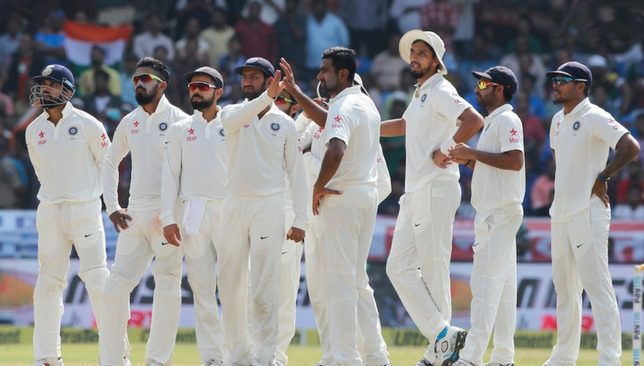
After India’s outstanding success over the last 18 months and Australia’s woeful recent record in the subcontinent, who would’ve thought that India would reach Bengaluru trailing 0-1? With that the case, there’s added spice in the contest.
For the first time since the Galle Test in 2015, Kohli’s team find themselves in unfamiliar territory, for one more slip in the series would quash their hopes of regaining the Border-Gavaskar Trophy.
FORGET WHAT HAPPENED IN PUNE
Whatever could’ve gone wrong went wrong in Pune. The pitch was too dry for anyone’s liking, Smith called the toss correctly, Starc played a blinder, India capitulated in 38 minutes and then dropped too many catches.
While it looks like a disaster that calls for radical change, it’s imperative not to look at it that way. The Indian team is the world’s best Test team and one loss can’t be considered the end of the world.
Instead, it’s important to view it as a timely wake-up call and a reminder to never let the guard down. In the media interactions since Pune, Kohli and conpany have shown the same attitude and now, the team selection should reflect that.
If the pitch isn’t as dry and flakey as Pune, there’s no reason to abandon the successful formula of fielding five bowlers, though there’s indeed a compelling case to pick Kuldeep Yadav ahead of Jayant Yadav.
AUSTRALIANS BETTER PREPARED IN PUNE
Even if we take into account the advantage of winning the toss, it’s only fair to acknowledge that the Australians adapted to the challenging conditions better than the Indians. The visitors batted with more application, twice their bowlers exploited the conditions better than the Indian spinners and they caught better too.
It’s evident that their preparation in Dubai leading up to this tour was impeccable. On the contrary, the Indian team walked into this series on the heels of a high-scoring limited overs series with England and a relatively high-scoring Test against Bangladesh.
If the pitch at Pune was also a typical Indian pitch, there wouldn’t have been any issues to adapt to the longer format, but the nature of the pitch called upon a skill-set that the Indians hadn’t practiced for a while. The long gap between the two Tests will bring the two sides closer, for India would be better prepared now.
DRS
One area that gets little attention but plays an important role is the utilisation of the reviews. Kohli has used the review 39 times since India started using the technology to review the on-field umpire’s decisions but only 30 times he’s got it right.
Like most new things, it takes time to get used to the idea of challenging the decision and devising a team methodology. When fielding, wicket-keeper Wriddhiman Saha becomes the most important person to guide Kohli and while his glove-work has been admirable, his contribution in assisting his skipper is negligible.
#AskTheInsider Yes, Kohli is dependent on Saha for inputs, for he's in the best position to judge. https://t.co/Ik6pjxNY4K
— Aakash Chopra (@cricketaakash) March 3, 2017
It’s not about seniority or having a powerful voice in a team’s eco-system but about being in the right place, and nobody is in a better position than Saha. He must have a definitive voice in guiding his skipper.
Also, while batting it’s imperative to know when to burn a review. In the second innings of the Pune Test, both openers consumed the reviews in the first few overs. Just because they get to use it first doesn’t mean that they shouldn’t think better of doing so.
The fundamentals of the prevailing system are such that unless you’re 100% sure, do not refer a leg-before decision, for nine out of ten times it’ll be the umpire’s call. You may agree or disagree with the concept, but it’s imperative to follow the rules.
In spite of the hiding they received in the first Test, India start as favourites to win the second encounter to square the series.
Reaching the summit is tough but staying there is tougher, and India have five days to show the world why they are at the top of the ICC’s Test Rankings.